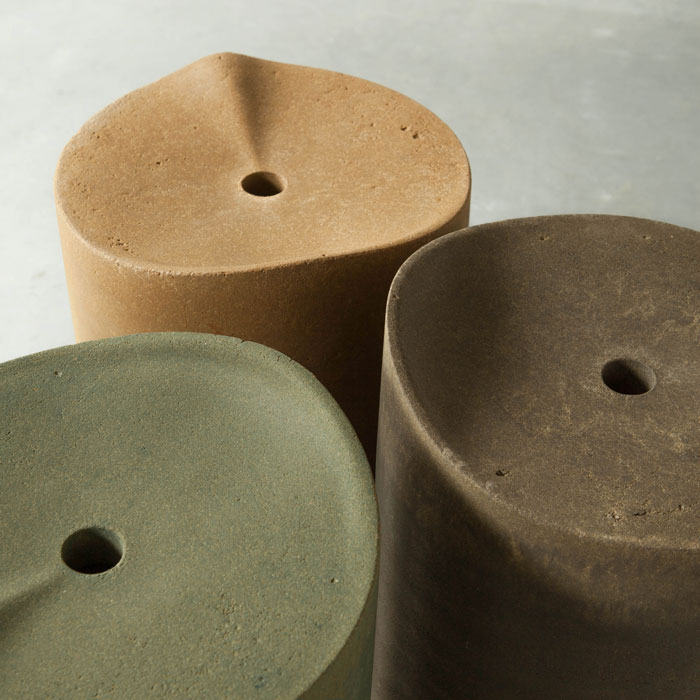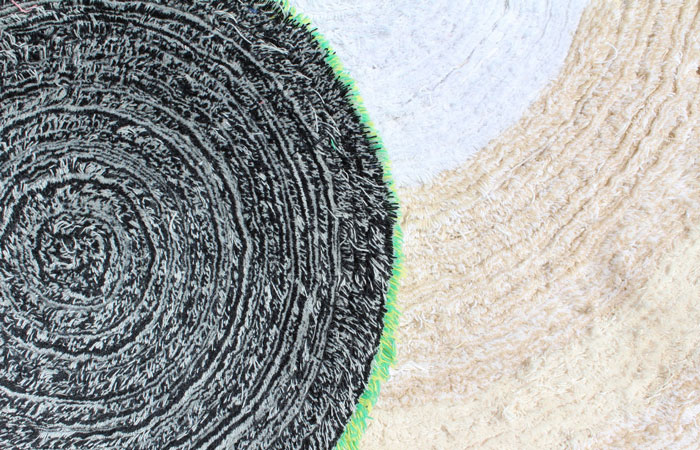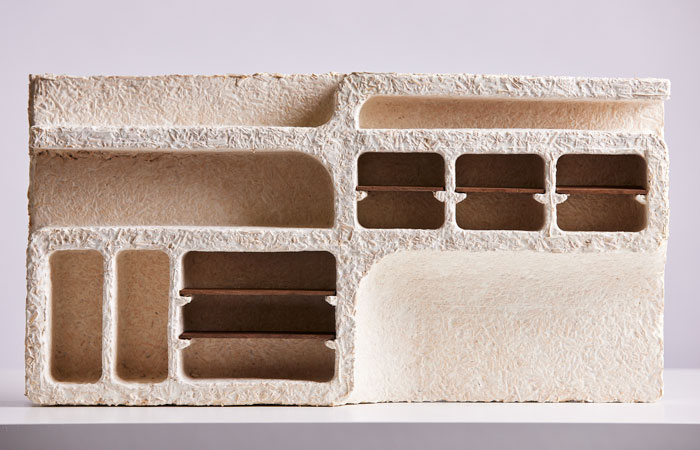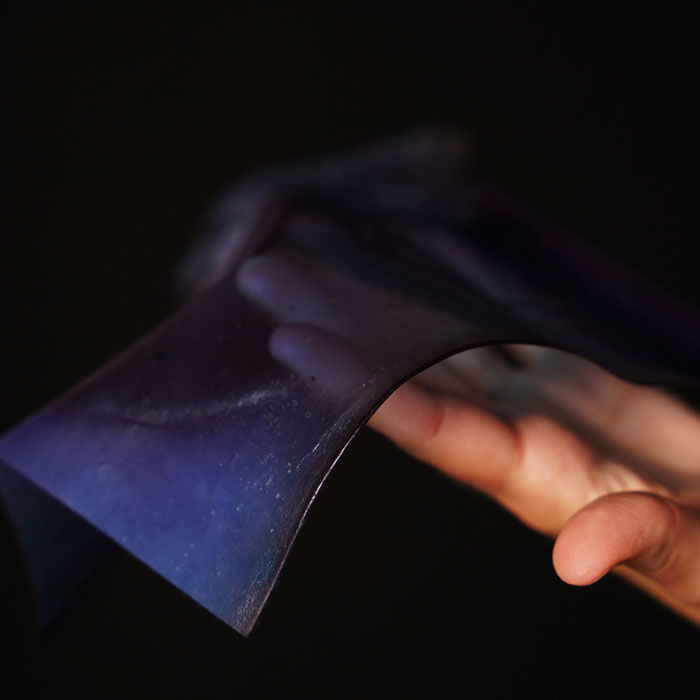Radical in Nature
At the beginning of a new year, we’re always reminded that things come and then go. Whilst trade shows and exhibitions themselves are back to the cycle and ever-moving flow of pre-pandemic times, the designers and work on show continue to be relevant. Dutch Design Week is one of the standout events in the annual calendar of major design exhibitions because of the vast array of both experimental and off-the-shelf design solutions on display.
As is increasingly well documented, we are now said to be operating within the Anthropocene Epoch, which is marked by the impact that we as a species are having upon the environment and climate.
The trend for design graduates taking on these issues in their work continues to grow, as shown by a blend of Central Saint Martins and Royal College of Arts who came together to create the Radical Enough? Expo at Dutch Design Week. Operating under the Remote Symbiosis banner, the group explores divergent forms of materiality to create unique products that propose new and less environmentally impactful ways of consumption. As both the title of the group and the exhibition suggest, the team is intent on pushing the status quo through collaboration between people and materials.

Belgian-based design duo Timoté Rouffignac and Damian Jodorowsky have worked together to explore alternative material possibilities to stone in the creation of Earthstone. The project proposes an innovative process of industrial production from reused local materials that are rarely exploited for the manufacture of objects. The pair combine an environmentally friendly mineral binder and raw earth from local excavation sites that are then compressed to form solid composite objects. As they explain, “The recipe used is the result of several years of development around the science of mineral polymers, allowing the solidification of earth without cooking it.” Because of the adaptability of the process, the new material can be easily moulded into durable objects, which in this instance takes the form of interior stools. Yet, whilst the final outcome is tough and fit for purpose, it can also be fully recycled by immersing it in water where it breaks down to its natural form over time.

Upcycling is indeed one of the key vehicles of production behind the work portrayed in Radical Enough? which is particularly true of Jane Wright and her project Cutting Edge. The main emphasis is on repurposing waste selvedge produced during industrial weaving, where the excess of valuable materials such as merino wool, cashmere and silk are often cut directly from the loom causing blends of selvedge that would ordinarily be deemed unusable by existing industry standards. Cutting Edge offers a more holistic approach to this material-intensive, restrictive and wasteful method through a process of reclassification. Waste fibres are selected and organised to create evolving combinations of colours and textures that celebrate variation and move away from the uniformity of mass production. Taking things one step further Wright has also utlised a bio-based rubber binder as an alternative to petroleum-based glue in the creation of carpets and rugs using the freshly saved fibres.

As the wave of interest in the amazing potential of mycelium begins to turn into a mini-revolution (hopefully) one designer has picked up on its incredible naturally occurring acoustic properties. In creating, or should I say, growing, the Cabana shelving unit, designer Vincent Dissaux has produced what could be the ultimate recording studio storage solution. The name of the project is a nod towards its hut-like aesthetic, although Dissaux also drew inspiration from the rustic vernacular architecture of his native Provence. The merging of bio-design innovation with local and traditional skills creates a synergy, and with it, a distinct aesthetic. The raw edges of the unit are an honest reflection of the material, which has been formed in a mould with curved formers that include subtle shelf mounts that accommodate removable timber ledges. Those curves, coupled with the materials absorbing qualities, are specially designed to allow for any music playing from it to resonate without interference. The project is in fact a combination of Dissaux’s own passions; as a member of Charge, a multidisciplinary music label, his understanding of music and sound runs deep. As such, Cabana comes with the assurance of firsthand industry experience fuelling the research behind it.

Filippo Caprioli is also interested in fungi, although his explorative project Uneasy Matter looks directly at the impact we may be having upon the symbiotic relationship between mushrooms and plants that live along with us in the biosphere. One of the more recent introductions to this environment is plastic, with many now using the term Plastisphere to describe our shared ecosystems, such is the ubiquity of the human-made substance. Caprioli is interested in discovering how organic entities may interact with the synthetic debris in the future. The layered glass sculptures, which deliberately resemble coring tubes, offer a visual insight into the geological strata that our collective actions are creating.

Another of the world’s omnipresent but up until recently overlooked super substances that has far more positive potential is algae. It’s a material that Ana Beatriz Alves has turned her attention to in her Blue Yonder project, which was inspired by encounters with the bio-material on the Atlantic coast of Portugal. Through a series of traditional and contemporary processes that draw influence from textiles and biochemistry, she is able to create both bioplastics, which replace fossil fuel polymers, and photosynthetic pigments. Where existing petro-plastics endure and form the Plastiphere, those formed in the Blue Yonder project are specifically designed to decompose in around 18 months.
Much like all of the materials and objects showcased by the Remote Symbiosis collective, this solution takes into account the materials and processes required to create it as well as its usage and afterlife, which by our previous standards, is indeed a radical step in the right direction.





